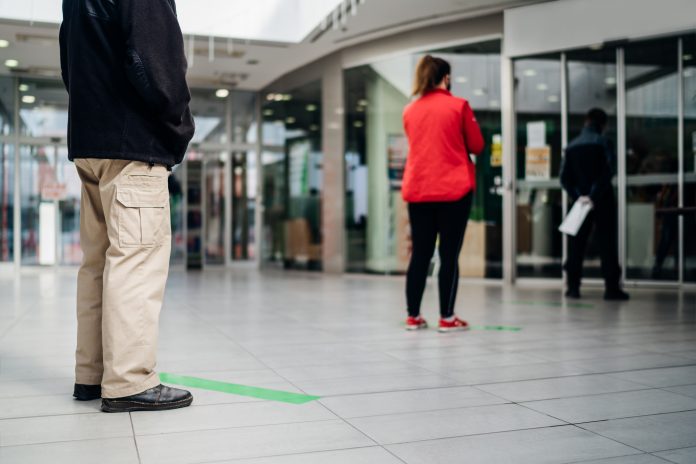Nick Wilson, Director of Health & Safety Services, and James Tamm, Director of Legal Services at Ellis Whittam, explain how those within education, local government and the charity sector can sustain safety measures in the workplace despite financial constraints
From those organisations in receipt of government funds for staff being essentially excluded from the furlough scheme to having to adhere to the unforeseen risks presented by COVID-19, already tight operating margins are being stretched even further and resources are scarce. In this context, difficult decisions might need to be made regarding your workforce, all while sensible, proportionate ways to keep people safe are identified. How can you maintain the balancing act?
Tip 1: Understand what health and safety law requires
Your top priority, of course, remains to keep people safe, and this will require you to make a number of adjustments to your premises, practices and workforce to reduce the transmission of COVID-19. This is best done systematically through a risk assessment, which will involve identifying potential hazards, considering who may be harmed and introducing appropriate control measures.
When deciding on controls, remember that it is not possible to eliminate the risk of COVID-19 completely and that is not what the law requires. Instead, employers are expected to put in place “reasonably practicable” measures, where the time, effort and cost involved in implementing a control is proportionate to the risk.
So, across education, local government and the third sector, what’s required to operate in a ‘COVID-secure’ way?
Education
Front of mind for schools is preparing for Autumn reopening. While planning to provide a COVID-secure environment might feel like an overwhelming task, remember the following:
- If you’re struggling to keep up with government guidance, try instead free resources such as the Coronavirus Advice Hub where guides and templates for employers are updated regularly to reflect the latest information.
- It is health and safety legislation, not the government guidance, that is legally enforceable. However, the guidance does provide a very useful starting point in deciding what is reasonably practicable and you must make sure that the measures you take are equally effective.
- Risk assessment isn’t about creating reams of paperwork; it’s about documenting what you are doing to keep staff and pupils safe so that this can be shared and understood.
- This is a collaborative effort, led from the top. Ensure your governors play an active role in the management of your school, namely the various compliance duties that are required under different legislation, and involve staff and pupils in the promotion of COVID-19 measures.
Local government
For local government leaders, your duty of care to the public will centre around the management of key services, from waste collection to council office services, to leisure centres, parks and playgrounds. As such, regular risk assessment is vital not only to mitigate infection risk but, in turn, prevent reputational damage.
With various agencies involved in delivering these public services, communication and robust contractor management procedures are essential to ensure no uncontrolled risks are introduced into the workplace. No council wants to find itself operating an environment that has become a COVID hotspot, which may also attract refusals to return to work.
Again, recognising the constraints on local government, the overriding principle here is reasonable practicability, as defined above.
Charities
While reduced funding and restrictions on fundraising events are putting a strain on the voluntary sector, charities cannot afford to skimp on health and safety. This doesn’t have to mean expensive systems, but you must again plan and implement reasonably practicable measures, which may include having employees work from home where possible, using cohort working groups to reduce the number of interactions, and sensible handling of donations.
Remember, health and safety law requires employers to not only protect employees but volunteers and members of the public too, so make sure to consider these groups within your risk assessment and communicate your findings and arrangements.
Tip 2: Review your workforce arrangements
New ways of working in order to observe health and safety measures, coupled with budget constraints, may require you to streamline or strip back your operations. Think about:
Are contractual changes required?
You may need to amend start and finish times to enable social distancing, redeploy employees to other roles or departments, or cut hours or pay due to the financial impact of the crisis. These changes to working arrangements may need to be reflected in employees’ terms and conditions.
A contract can only be changed in line with its existing terms or by agreement, so start by checking what it currently says. If what you are trying to achieve is already permitted under the terms of the contract, the change can be enacted that way. If not, the quickest and easiest way to introduce a change is by negotiation and agreement.
Are redundancies necessary?
Redundancies are an unfortunate reality in the current climate and must be handled carefully as the potential for legal missteps is high. Processes vary depending on how many employees are at risk; however, some broad principles apply universally, including the need to:
- Provide adequate advance warning;
- Consult with staff to get their feedback and input;
- Be fair and reasonable, and follow a proper process;
- Explore alternatives, such as the furlough scheme;
- Consider, discuss and offer suitable alternative employment if available; and
- Make appropriate redundancy and notice payments subject to statutory or contractual requirements.
These are challenging times for all organisations and those underpinned by public funding may face a particularly tough test. Regardless of the financial pressures, safety must remain the number one priority for all as we adjust how we operate.





![Europe’s housing crisis: A fundamental social right under pressure Run-down appartment building in southeast Europe set before a moody evening sky. High dynamic range photo. Please see my related collections... [url=search/lightbox/7431206][img]http://i161.photobucket.com/albums/t218/dave9296/Lightbox_Vetta.jpg[/img][/url]](https://www.openaccessgovernment.org/wp-content/uploads/2025/04/iStock-108309610-218x150.jpg)





